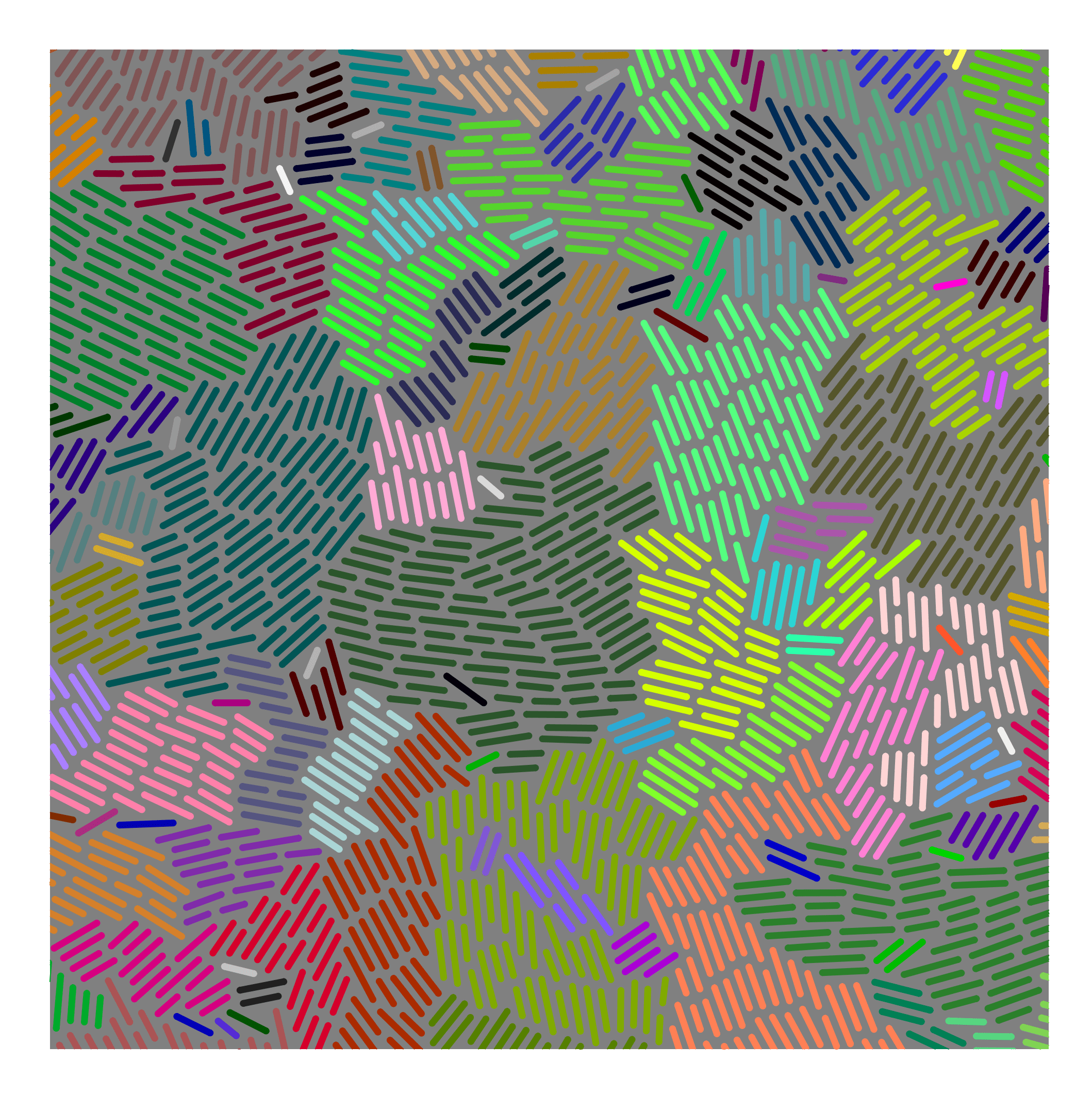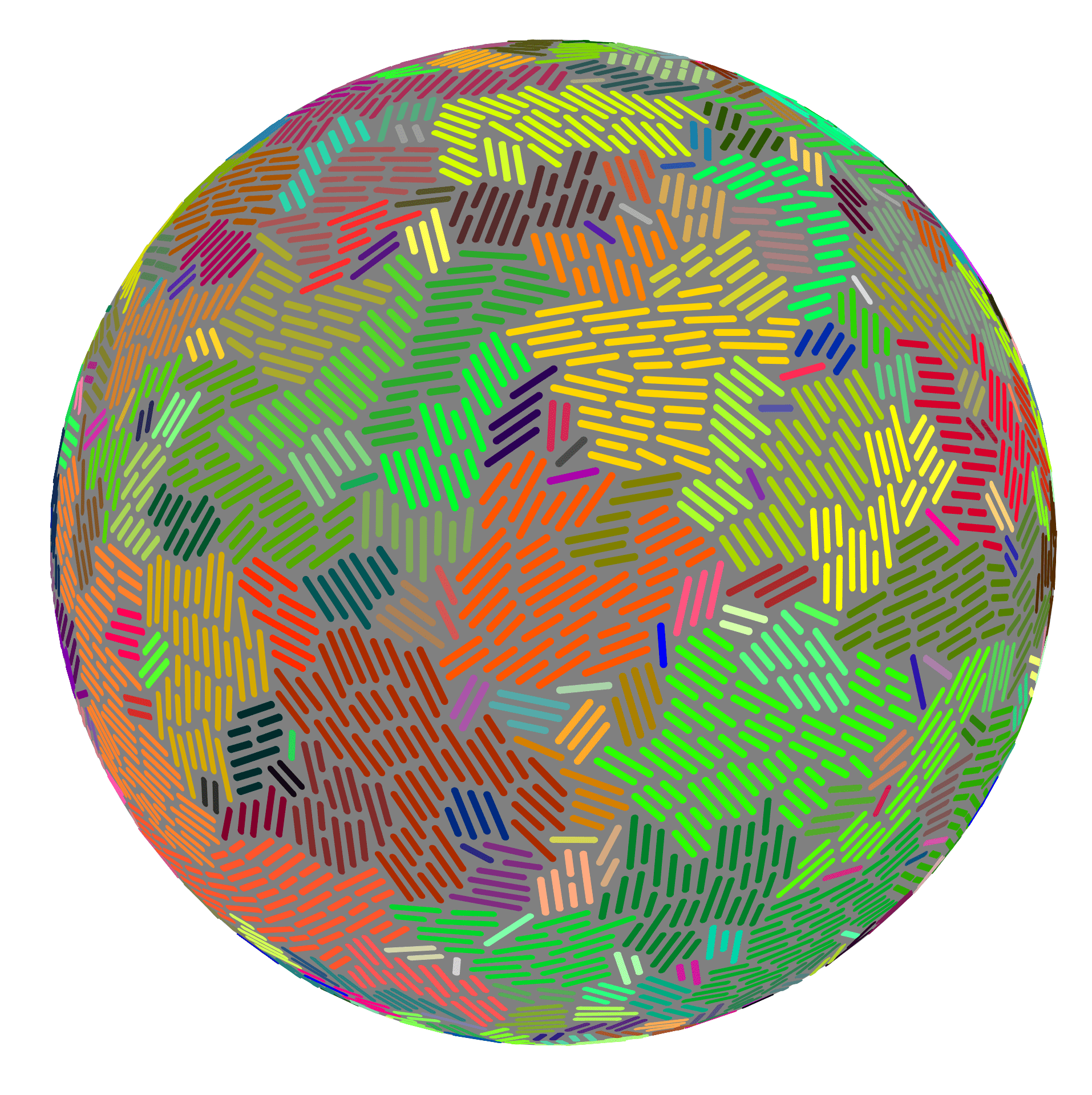

Simulated bacteria growing on a flat surface (left) versus on a sphere (right). The simulation recreates the growth of real bacteria raised in the lab; it also shows that when the microbes grow on progressively smaller curved surfaces, the areas of alignment become smaller and more chaotic.
Bridges-2 Simulations Hint at Ways to Help Growth of Good Bacteria, Hinder Bad Bacteria
How colonies of bacteria — mats, or biofilms — grow and cooperate is important for hygiene, medicine, and problems like speeding the growth of petroleum-eating microbes in ocean oil spills. A team from the University of Illinois Urbana-Champaign used PSC’s Bridges-2 system to simulate bacterial growth on surfaces. The curve of the surface, they found, directs how well the bacteria can align and whether the biofilm is smooth or buckles. The result offers clues to helping the growth of good bacteria and hindering bad bacteria.
WHY IT’S IMPORTANT
Say what you want about bacteria, they are survivors. As anybody who’s worked in a restaurant can tell you, you can’t just slather disinfectant on a counter and call it safe for food handling. You have to scrub, with soap and water, and then disinfect before you quit. That’s because bacteria can grow in mats, also called biofilms, that keep out chemicals that can harm the bacteria inside them. You need the detergent and the elbow grease to break those mats up and expose the little bugs to the disinfectant.
How bacterial colonies can grow and cooperate, then, is important for hygiene and in medicine. It’s also important when there’s an oil spill at sea. The oceans contain bacteria that naturally eat petroleum oil. They can really help clean up the spill, provided they grow efficiently and surround the droplets of oil well enough to protect the water around them.
“What I’m trying to do is understand how groups of bacteria organize into different patterns and how that affects the large-scale behavior of a bacterial colony and its ability to adapt to its environment and then affect that environment.” — Blake Langeslay, University of Illinois Urbana-Champaign
HOW PSC HELPED
You might think that, to understand how bacteria grow, you’d need to delve deep into their genes, and how their DNA directs signaling between cells. But in science, the principle of Occam’s Razor says that, when you have a simple explanation for a phenomenon versus a more complicated one, test the simple one first. It isn’t always right, but it is always the quickest to assess. In this case, Langeslay and his collaborators started with an intriguing idea. Was it possible that the physical constraints of growing in space has more effect on how bacterial colonies expand than any genetic programming? If so, they could simulate bacterial growth assuming that the organisms are just little cylinders jostling for space. And this problem, in turn, has more similarity to how molecules jostle and bend than to any complicated genetic programming. The simulation would start, then, with a molecular dynamics approach, representing bacteria in the computer as if they were rigid little rods. Bridges-2 was perfect for the work. Its ability to bring both numerous processors and expansive memory available to each processor allowed the team both to keep track of the motions and positions of the virtual bacteria inside their program and run the simulation many times. The latter was needed to get a sense of how random chance affects the growth, giving the scientists both an average behavior for the simulated colonies and a sense of how much variation there would be from that average.“What [Bridges-2] allows me to do is run a lot of these simulations simultaneously. [They were] designed and can run on my lab computer. But I can run one at a time, and it takes [about] 24 hours that I can’t use the computer for anything else. So it’s not really practical that way. The project absolutely would not be possible without [Bridges-2].” — Blake Langeslay, University of Illinois Urbana-Champaign
The simulations gave results that were both intriguing and encouraging. For one thing, the virtual bacteria in the computer acted a lot like real bacteria growing in the lab. This was a big vote for the molecular dynamics approach — it really does look like the microbes are more affected by simple matters of space than by any complicated genetics.
How the bacteria grew was both logical and suggestive. When growing on a surface — think, a bubble of oil suspended in water, though it also works for surfaces like a kitchen counter — that is large enough that it doesn’t curve much compared with the size of the bacteria, they align and grow in a tightly packed pattern. Exactly what you’d expect if the space available was what directed their growth.
When the surface curve was smaller, though, the bacteria couldn’t align so neatly. They started to buckle and shift into a more chaotic pattern. Again, what you’d expect if they were just rigid little rods growing into space as quickly as they could. The difference with the less-curved surface also offered hints of how the size of oil droplets in a spill might direct bacterial growth and make it easier or harder for the microbes to digest the oil. The team reported their results in a series of journal articles, in particular in Soft Matter in 2023.
